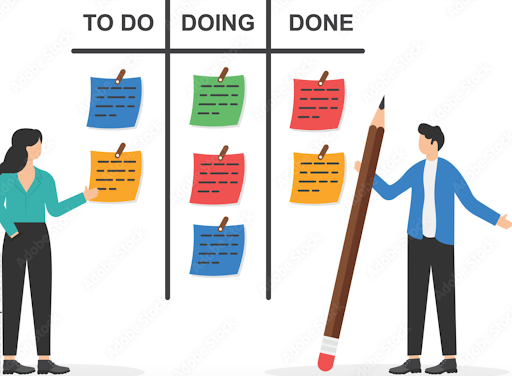
We know that the Agile methodology has recently become a popular and widely used model for Software Development. The reason for its popularity is the ability to break the tasks into smaller iterations, leading to well-defined short-term goals that helps in minimizing the project risk. You require a framework to organize or arrange the tasks to plan your sprints. These sprints will finally lead you and your Agile team to reach your specific goal in the desired time. But, are you using the best framework to plan your sprints?
Introduction to Kanban
The first Kanban system was developed by a Japanese Industrial Engineer and Businessman, Taiichi Ohno for Toyota automotive in the early 1940s. In 2004, the Kanban framework was introduced in the field of Software Development by David J. Anderson.
It is a technique used to help teams work more effectively together. It is a visual system for managing workflow as it moves through a process, with the emphasis on both the process (workflow) and the work product that passes through it. The emphasis is on identifying and addressing process bottlenecks so that work can flow through the process effectively, thereby optimizing time to market (speed), cost, and quality (ensure that the work item is having minimal defects). Thus, the Kanban method aids in the visualization of work and the management of workload.
While Kanban can be used in a variety of production processes and industries, it is most used in software development. Because it emphasizes the importance of complete transparency and real-time communication throughout the development process, it is frequently used in agile software development. The Kanban board is especially useful for software development team members because it allows them to see what others are working on, what they've already completed, and what they still need to do.
Why Kanban?
- Begin with what you are doing right NOW - The emphasis is on the present. The main goal is to not disturb the current state of the process and to identify, focus, and study the existing process before introducing incremental changes to manage evolutionary change. As a result, when implementing Kanban for service teams, many team members initially believed they were not making any changes to their current process and that everything appeared to be the same. They perceived changes occurring over time in an evolutionary fashion as incremental change is introduced into the process.
- Encourage LEADERSHIP at all levels - Leadership is a critical concept that should be promoted at all levels, from team member to department head. Kanban focuses on developing leadership skills at all levels of the organization so that empowered individuals can make decisions. This is critical because team members cannot make appropriate decisions if they lack strong leadership skills, even if they are empowered.
- Accept EVOLUTIONARY CHANGE as a means of pursuing improvement - Small, incremental steps are taken to implement changes in an evolutionary fashion. This results in very little pain because of changes, and team members embrace these changes as they occur in an evolutionary manner. Evolutionary changes give team members the impression that everything is the same and that there isn't much difference in the new process because the change is gradual and implemented over time.
- Policies control SERVICE DELIVERY - Service delivery to the customer necessitates strict discipline to maintain a consistent cadence of work delivery, which improves predictability of the service delivered. Because there are multiple service level agreements to meet for different types of service support (e.g., L1, L2, L3, L4) and service priority (e.g., P1, P2, P3, P4), it is critical that key policies are defined very clearly by the team and understood by all team members and the customer. This ensures that the service delivery expectations are clearly stated prior to the start of work, and that the customer and team members understand the service delivery guidelines and rules. This increases trust and transparency, and team members can meet the customer's expectations in a planned and managed manner.
- Let people self-organize to manage the WORK - A fundamental principle that focuses on managing work and allowing people to self-organize around it. Managers used to oversee managing people and ensuring that the work was done correctly. However, in this case, the principle emphasizes the importance of proper work management. The people who do the work have the most information about the job, and this information is always up to date. As a result, they are in the best position to make decisions about the work to be done. This is only possible if they are given autonomy and allow themselves to self-organize around the work.
- Recognize and prioritize CUSTOMER needs and expectations - The emphasis here is on identifying, constructing, designing, and delivering the appropriate service to the customer. The customer's needs and expectations are identified and studied, and the service delivery is then designed to match the work capacity and the customer's need to provide appropriate services to the customer.
Conclusion
Because more and more businesses see the value in using Kanban methodologies, becoming a Kanban expert, and receiving your certification can open a plethora of doors. Skilldots provides a variety of training options for all skill levels

